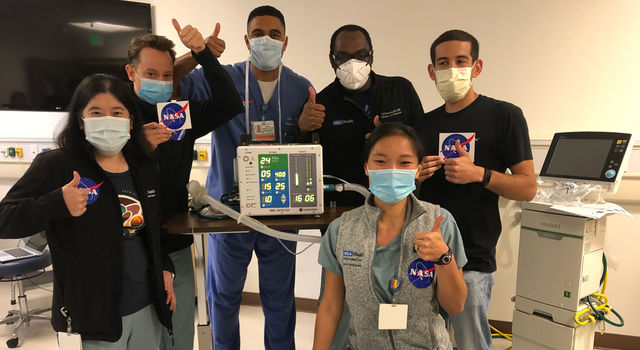Blogs | JPL | December 4, 2014
Earth Observations to Support Climate Decisions
Riley Duren, chief systems engineer for the Earth Science and Technology Directorate at NASA's Jet Propulsion Laboratory, is reporting from the 2014 United Nations Climate Conference in Lima, Peru.
Today I'm en route to Lima, Peru, to join the United Nations climate conference. This is the 20th Conference of Parties (COP-20) of the UN Framework Convention on Climate Change (UNFCCC). The meeting is intended to set the stage for an international agreement next year between 195 countries on actions to address climate change. For the next two weeks, diplomats, policy makers, scientists, engineers, economists, and representatives of business and non-profit organizations are convening in Lima to discuss a wide range of options to avoid dangerous climate change and/or attempt to manage the impacts to humanity and the other species that share planet Earth. (More background, here)
As it turned out, I managed to miss my flight yesterday as result of the heavy rains and jammed freeways that ensued from the latest "atmospheric river" event in Los Angeles. But I have to admit, I was far more relieved than annoyed by this break (albeit brief) in California's persistent drought - a sentiment shared by all my neighbors and fellow travelers. Yet another reminder of the critical connections between weather, climate, and society, and what's at stake in efforts aimed at planetary stewardship.
Several JPLers are participating in the meeting given the lab's contribution of applying satellite observations to improve scientific understanding of the Earth and support societal decision-making. Collectively, the efforts of us traveling this week span sea, land and air - each reflecting part of NASA's broader mission to study the Earth as an integrated system.
My colleague Dr. Michelle Gierach is part of the NASA delegation at the US Center and will be talking about the ocean and impacts of climate change on key features like the El Nino Southern Oscillation (ENSO). Dr. Sassan Saatchi, who studies forest carbon, will be a panelist at this weekend's Global Landscapes Forum.
My own work these days is mostly focused on heat trapping or "greenhouse" gases in the atmosphere, like carbon dioxide and methane, and understanding the connections with human activity at the scale of countries, states, cities and individual pollution sources. I spend much of my time working with policy makers and scientists to understand stakeholder needs and design monitoring systems that can support practical decision making. It's a big challenge: These monitoring "system of systems" typically require a suite of Earth observing instruments from the ground, air and space - often fused with data from many other information sources. In addition to the technical challenges, after several years in this field, I continue to marvel at the diversity of perspectives, priorities, institutional cultures and ways of thinking, with implications on what data is required. The social dimensions are every bit as important as the bio-geophysical.
I'll say more in subsequent posts about some specific efforts that are underway and how they connect with events at the Lima conference.
TAGS:EARTH, CLIMATE CHANGE







